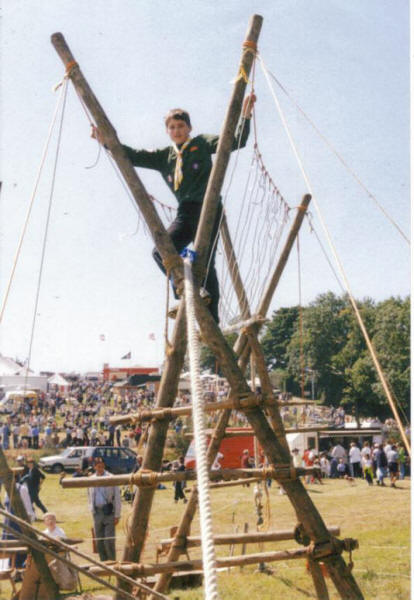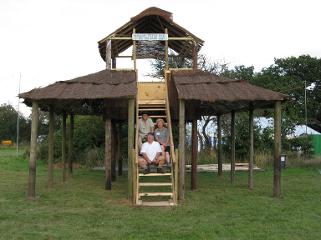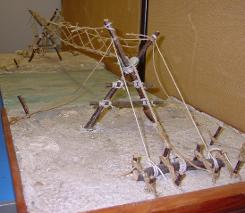An introduction into Pioneering principles

What is Pioneering
Experience-based learning?
Its written that Pioneers are people who go ahead to open up the way in the jungles or elsewhere for those coming after them, improving the way forward for those following. Frontiersmen, trappers, hunters, pioneers, explorers bushmen, and drovers are people ready to face dangers to help one another, are strong, plucky, observant, and will give up everything in order to get their work done to open up the way for those coming after. living of the land, they would go ahead opening up new frontiers, making maps, fording rivers, building bridges and cabins, climbing mountains, rafting rivers, and overcoming all manner of natural obstacles in order to make life easier for themselves and others following.
All this aside, in its most basic form pioneering is using ropes, and wooden poles/spars, and some simple knots and lashings, to build different structures including simple items such as camp gadgets, and larger things including bridges, towers, etc. So why should I consider using pioneering when planning an outdoor activity? well the beauty of pioneering is it can be as simple or ambitious as you want it to be, and within reason it's suitable for all ages, and is both adventures and interesting, it also promotes dexterity, team work, and leadership everything you want in an experience-based learning program. Have I got you interested, or dose it sound too good to be true? Well read on.
The main consideration when starting a pioneering project is its suitability in comparison to the ability of your students, remember its got to be sufficiently challenging and not to complicated. Over complicating your subject can put people off for life, so give them a purpose to what they are doing, and keep it simple, otherwise it will become boring. To achieve this you can make what they are doing into a game, and perhaps you could have some way of earning points to get the materials needed to build their structure. Or give them a challenge, perhaps construct something to move an object, or to lift something, a good one is to have them build something to carry a container holding water without spilling it, and have competing teams, another one is to build a sedan chair to carry someone over an obstacle course, but remember to do a risk assessment first. Pioneering can open up a completely new world for your students, and its something they can all do together without a great deal of space, or equipment, all you have to do is make it equally challenging and interesting and the fun will follow.
If you are new to pioneering and think it would be something of interest to your members, or the people you represent, or perhaps the organization or group you run, and are interested in learning pioneering, or want to use it as part of your outside learning program. Adventure pioneers run a number of pioneering training courses, teaching the basic knots and lashings to construct trestles and A frames, and do more advanced courses teaching the construction of bridges, towers, rafts, cranes and lifting equipment for Scouts, Youth groups, individuals, Teachers and Schools. We also do team building scenarios using pioneering for corporate events, to improve leadership skills and promote inter personnel interaction. we also organize pioneering workshops, or demonstrations for shows and exhibitions. you can contact us by using the contact page and asking about our services, or go to http://adventurepioneers.uk

Above is a pioneering monument the webmaster built with some friends for the Tropical Zone at the 2007 Scout World Jamboree
For the younger students, or someone who is just starting pioneering, lets look at some of the things you can do as a pioneering project. You could start with something simple like miniature, model, or table top pioneering, this is a miniaturized form of pioneering that can be done without much preparation. Making models is a convenient way to plan something you intend to build full size, it requires all the same principles as full size pioneering without lot's of equipment, all that is needed is some twine, and some sticks gathered from a suitable bush or tree close to where you meet. This is good training because when you start to build full-size things, be it a bridge, or perhaps a trebuchet, making a model requiers all the same techniques as a full size project, and can be used to establish an equipment list, it will also help determine the sequence of construction when it comes to making one full size, but most of all it will enable you to establish if it's a practical project to do?


The purpose of all the articles within this website that contain instructions, advice, or how-to content is to present facts, and not to train.
For more information about pioneering, or if you are looking for an instructor, or want to attend a pioneering course, use the contact us page.